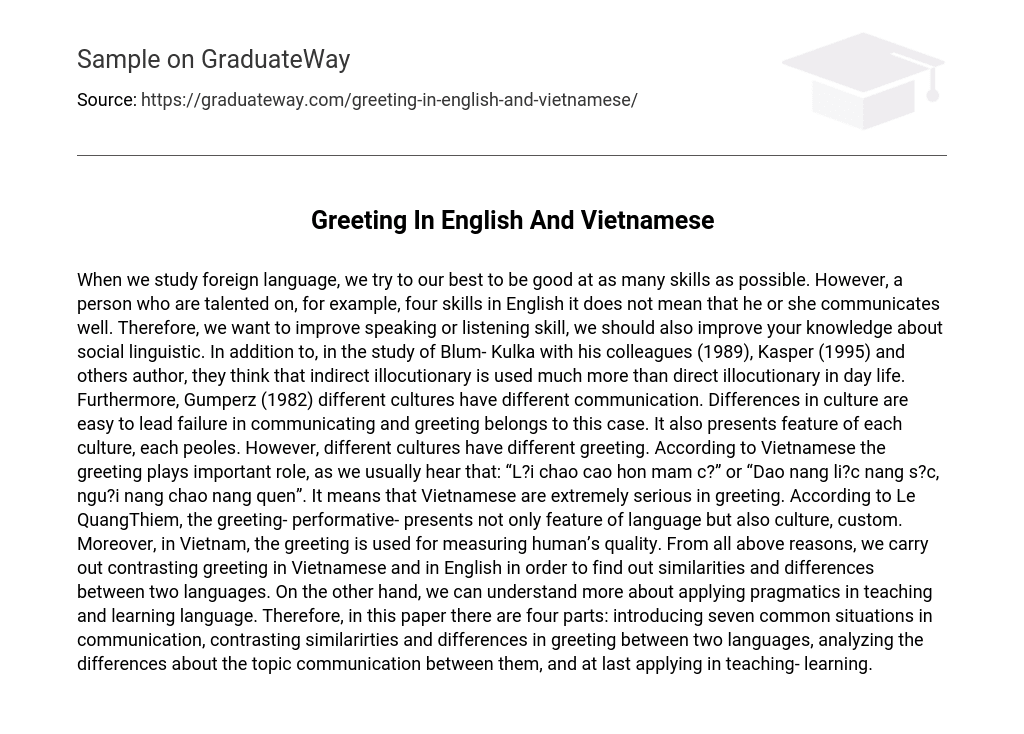In our efforts to become proficient in a foreign language, we strive to excel in multiple skills. However, being talented in only four skills does not guarantee effective communication in English.
Improving speaking or listening skills requires enhancing knowledge of social linguistics. Research conducted by Blum-Kulka et al. (1989), Kasper (1995), and others indicates that indirect illocutionary acts are frequently used in daily interactions compared to direct illocutionary acts. Additionally, Gumperz (1982) argued that communication breakdowns often occur due to different communication styles among cultures, particularly in greetings. Greetings not only reflect the characteristics of each culture but also differ across cultures.
According to Vietnamese culture, the greeting holds significant importance. It is often said: “L?i chao cao hon mam c?” or “Dao nang li?c nang s?c, ngu?i nang chao nang quen”, emphasizing the seriousness Vietnamese people place on greetings. Le QuangThiem also believes that greetings not only reflect language characteristics but also represent culture and customs. Additionally, in Vietnam, greetings are used to assess a person’s character. Considering these factors, we examine and compare Vietnamese and English greetings to identify similarities and differences between the two languages. Moreover, this analysis helps to enhance our understanding of pragmatics in language teaching and learning.
Thus, this paper consists of four main sections: showcasing seven common communication scenarios, comparing and contrasting greeting customs in two languages, examining the disparities in communication styles, and finally applying these findings to teaching and learning environments.





